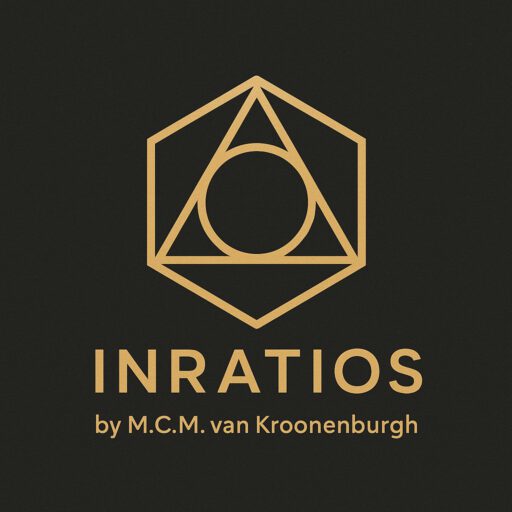From Curves to Containers
Why digital systems prefer boxes, and what that reveals about shape, scale, and certainty.
From radius to raster
We often begin geometry with a circle.
A radius. A center. A curve.
With π as the tool to describe its length and area.
It’s a well-known starting point; simple, elegant, and widely used.
But in digital systems, things don’t begin with curves.
They begin with containers.
Before a computer can analyze a shape, it frames it.
It places it inside a bounding box.
Whether you’re working in image recognition, 3D modeling, or UI layout,
the first step is always the same:
define the limits, then look inside.
Not because boxes are ideal.
But because they are practical.
They are measurable, finite, and structurally simple.
Where curves imply continuity, boxes enforce clarity.
And so, without ever saying it aloud,
digital systems teach us to measure through boundaries,
not from the inside out, but from the outside in.
Measuring from the outside in
In traditional geometry, we measure from the inside out.
Start with a radius, apply π, and compute the rest.
The shape defines the result.
But digital systems flip that logic.
They don’t begin with the shape.
They begin with its boundary.
A shape is first detected, then placed in a frame.
That frame becomes the reference; a square in 2D, a cube in 3D.
Everything else is relative to that container.
The box isn’t just a tool — it’s the system’s definition of space.
This is where the Geometric Ratio Model (GRM) comes in.
Rather than starting with internal properties like radius or circumference,
GRM begins with the container.
And it defines the shape by how much of that container it occupies.
A circle?
It fills exactly 78.54% of the square, by area and by perimeter.
That’s 0.7854 SAU or SPU, depending on what you measure.
A sphere?
It occupies 0.5236 SVU of its cube, volume-based, no water displacement needed.
These values are not approximations.
They are fixed ratios, canonical within the GRM model.
And they’re valid only if the shape is perfectly inscribed.
No estimation. No curvature math.
Just containment and proportion.
In this system, every measurement becomes a comparison.
Between shape and structure.
Between what is inside, and what holds it.
GRM doesn’t just support digital logic —
it mirrors how digital systems already work.
And it gives that logic a mathematical backbone.
Matrix, How digital systems measure (now vs. GRM)
We can summarize the difference this way:
| Digital systems today | Digital systems with GRM |
|---|---|
| Use bounding boxes to isolate shapes | Use bounding boxes as structural reference |
| Approximate internal values (e.g. radius) | Compare proportionally to fixed container |
| Measurement = post-processing | Measurement = embedded in the ratio |
| Geometry depends on derived calculation | Geometry is defined by fixed ratio (e.g. 0.7854) |
| Interpretation varies by method | Standardized, repeatable across contexts |
Digital systems already rely on containers,
GRM simply makes that reliance explicit, measurable, and proportional.
Impact: Less math, less waste
And perhaps geometry isn’t just a question of logic anymore,
but one of impact.
When we applied this logic to image generation in AI models, we observed something remarkable:
in some cases, up to 70% less energy per image,
simply because the system had to search less and align faster.
GRM reduced the number of iterations, shortened the prompt resolution time,
and led the model more directly to the intended structure.
These are early, model-level observations,
but they show that less math doesn’t mean less precision.
It means less waste; in time, in code, in energy.
Note: These observations were gathered using ChatGPT and DALL·E’s internal measurement tools, based on prompt execution metrics such as iteration count, processing time, and image convergence speed. Results may vary depending on model version and prompt structure. Further investigation is ongoing to validate these gains across broader use cases and contexts.
A square start to circular logic
The circle hasn’t changed.
But our way of approaching it has.
Instead of estimating its curve, we now measure its context.
We stop calculating, and start comparing.
And that one shift, from inside-out to outside-in,
changes how we think about form, logic, and even efficiency.
Tomorrow, we’ll zoom in on that shift.
What happens when you define a shape not by what it is,
but by how much of the space it occupies?
Up next: The Power of 0.7854 – When Circles Align with Squares
Stay curious.

